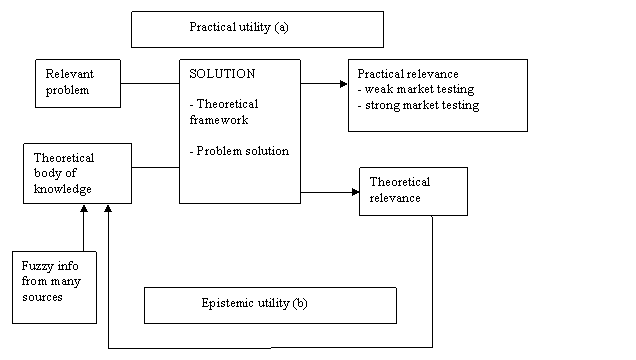Constructive research
Constructive research is perhaps the most common computer science research method. This type of approach demands a form of validation that doesn’t need to be quite as empirically based as in other types of research like exploratory research.
Nevertheless the conclusions have to be objectively argued and defined. This may involve evaluating the “construct” being developed analytically against some predefined criteria or performing some benchmark tests with the prototype.
The term “construct” is often used in this context to refer to the new contribution being developed. Construct can be a new theory, algorithm, model, software, or a framework.

The following phrases explain the above figure.
The "fuzzy info from many sources" tab refers to different info sources like training materials, processes, literature, articles, working experience etc.
In the “solution” tab, “theoretical framework” represents a tool to be used in the problem solving.
The “practical relevance” tab it refers to empirical knowledge creation that offers final benefits.
The “theoretical relevance” tab it gives the new theoretical knowledge that needs scientific acceptance: the back arrow to “theoretical body of knowledge” tab.
Steps to be followed in “practical utility” tab (a):
- set objectives and tasks
- identify process model
- select case execution
- interview case organization
- prepare simulation
- run simulation
- interpret simulation results
- give feedback
Steps to be followed in “epistemic utility” tab (b):
- constructive research
- case research
- surveys
- qualitative and quantitative methods
- theory creating
- theory testing